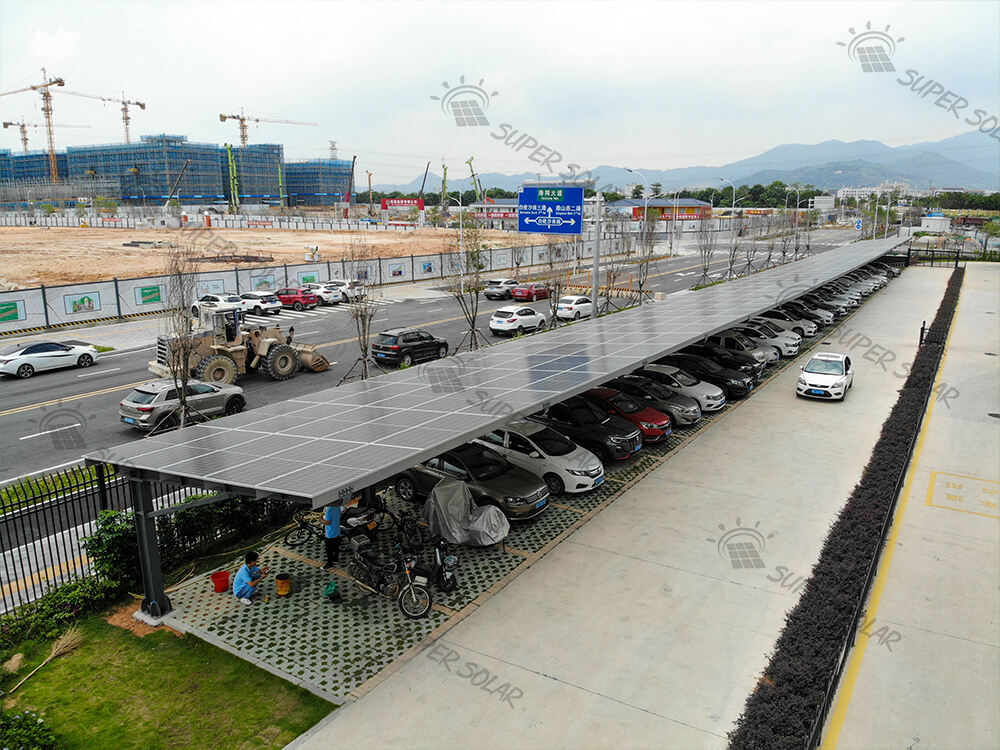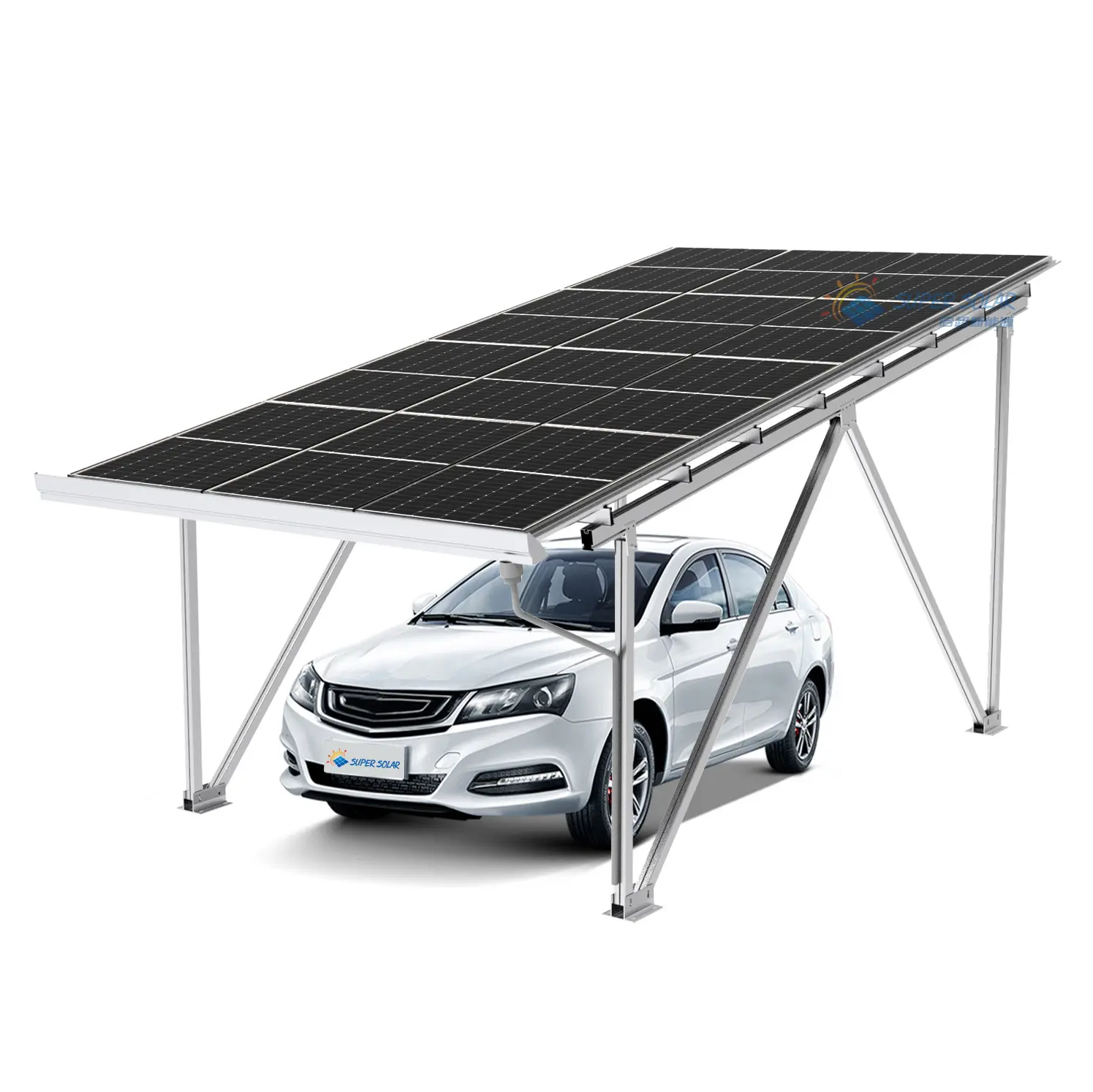The Growing Impact of Solar Carports in Modern Business Infrastructure
Solar carports represent a revolutionary advancement in sustainable business infrastructure, combining practical parking solutions with clean energy generation. As businesses increasingly seek ways to reduce their carbon footprint while maximizing space utilization, solar carports emerge as an innovative solution that transforms ordinary parking areas into powerful energy-producing assets. These structures not only provide essential shade and protection for vehicles but also generate significant amounts of renewable energy, making them a smart investment for forward-thinking businesses.
The concept of solar carports has gained substantial traction in recent years, with businesses across various sectors recognizing their dual benefits. From retail centers to corporate campuses, organizations are discovering that solar carports offer an excellent return on investment while demonstrating their commitment to environmental stewardship. This comprehensive guide will explore the essential aspects of designing and installing a solar carport system for your business, ensuring you make informed decisions throughout the process.
Planning Your Solar Carport Project
Site Assessment and Feasibility Study
Before diving into the design phase, conducting a thorough site assessment is crucial. This involves evaluating your parking area's solar potential, including factors such as sun exposure, shading analysis, and available space. Professional surveyors will assess the terrain, soil conditions, and existing infrastructure to determine the most suitable locations for your solar carport installation.
The feasibility study should also include a detailed analysis of your business's energy consumption patterns and requirements. This data helps determine the optimal size and capacity of your solar carport system, ensuring it aligns with your energy needs and financial goals. Consider factors such as peak usage times, seasonal variations, and future growth projections when planning your system's capacity.
Financial Planning and Incentives
Understanding the financial aspects of your solar carport project is essential for successful implementation. Initial costs typically include structural components, solar panels, inverters, electrical systems, and installation labor. However, numerous financial incentives can significantly reduce your overall investment, including federal tax credits, state rebates, and local utility incentives.
Calculate your expected return on investment by considering factors such as energy savings, potential revenue from renewable energy credits, and increased property value. Many businesses find that solar carports pay for themselves within 5-7 years, offering substantial long-term savings on energy costs while providing additional benefits such as weather protection for vehicles and enhanced corporate image.
Design Considerations for Maximum Efficiency
Structural Engineering and Safety Standards
The design of your solar carport must prioritize both functionality and safety. Structural engineers will need to calculate load-bearing requirements, accounting for factors such as wind loads, snow loads, and seismic considerations. The support structure must be robust enough to handle the weight of the solar panels while maintaining aesthetic appeal and ensuring user safety.
Modern solar carport designs often incorporate features such as integrated lighting, water management systems, and electric vehicle charging stations. These elements should be considered early in the design phase to ensure seamless integration and optimal functionality. Working with experienced designers will help you create a structure that meets all local building codes while maximizing energy generation potential.
Panel Selection and Layout Optimization
Choosing the right solar panels is crucial for system performance. Consider factors such as efficiency ratings, durability, warranty terms, and cost-effectiveness when selecting panels. High-efficiency panels may cost more initially but can generate more power in limited space, potentially making them a better long-term investment.
The layout of your solar carport should optimize both parking space utilization and energy generation. This involves careful consideration of panel tilt angles, row spacing, and orientation to maximize sun exposure throughout the day. Advanced design software can help model different configurations to determine the most efficient layout for your specific location and needs.
Installation Process and Timeline
Permitting and Regulatory Compliance
Navigating the permitting process is a crucial step in solar carport installation. Work with experienced contractors who understand local building codes, zoning requirements, and electrical regulations. They can help prepare and submit necessary documentation, including structural calculations, electrical diagrams, and site plans.
The approval process timeline varies by location but typically takes several weeks to months. During this period, maintain open communication with local authorities and address any concerns promptly to avoid delays. Some jurisdictions may require additional environmental impact studies or special permits for commercial solar installations.
Construction and System Integration
The actual construction process begins with site preparation and foundation work. This phase may include trenching for electrical conduits, pouring concrete foundations, and establishing connection points to your building's electrical system. Proper planning can minimize disruption to your business operations during construction.
System integration involves installing the support structure, mounting solar panels, and connecting electrical components. Professional installers will ensure proper grounding, weatherproofing, and safety features are implemented. The final steps include testing all systems, commissioning the installation, and obtaining necessary inspections and certifications.

Maintenance and Performance Monitoring
Regular Maintenance Requirements
Implementing a comprehensive maintenance program ensures optimal performance and longevity of your solar carport system. Regular inspections should check for panel cleanliness, structural integrity, and electrical connections. While solar panels generally require minimal maintenance, periodic cleaning and inspection can prevent potential issues and maintain peak efficiency.
Develop a maintenance schedule that includes both routine tasks and annual professional inspections. This proactive approach helps identify and address potential problems before they affect system performance. Consider weather patterns and local environmental conditions when planning maintenance activities.
Performance Monitoring and Optimization
Modern solar carport systems include sophisticated monitoring technology that tracks energy production, system health, and performance metrics in real-time. This data helps identify opportunities for optimization and early detection of potential issues. Regular analysis of performance data ensures your system continues to meet energy generation targets.
Consider implementing a smart monitoring system that provides detailed analytics and alerts. These systems can help maximize your return on investment by optimizing energy usage patterns and identifying maintenance needs promptly. Many solutions offer mobile apps or web portals for convenient system monitoring and management.
Frequently Asked Questions
What are the typical cost ranges for a commercial solar carport installation?
Commercial solar carport installations typically range from $3.50 to $4.50 per watt, depending on size, location, and specific design requirements. For a 100kW system, total costs might range from $350,000 to $450,000 before incentives and tax credits. However, actual costs vary significantly based on local factors and chosen specifications.
How long does a complete solar carport installation take?
The entire process, from initial planning to final commissioning, typically takes 4-6 months. This includes 1-2 months for planning and permitting, 2-3 months for procurement and site preparation, and 3-4 weeks for actual construction and system installation. Timeline can vary based on project size and local regulations.
What type of maintenance is required for solar carports?
Solar carports require relatively minimal maintenance, primarily consisting of annual professional inspections, periodic panel cleaning (frequency depends on local conditions), and occasional electrical system checks. Most manufacturers recommend professional cleaning and inspection at least once per year to maintain optimal performance and warranty coverage.
Can solar carports be expanded in the future?
Yes, well-designed solar carports can be expanded to accommodate future growth. However, initial planning should account for potential expansion by ensuring adequate structural capacity, electrical infrastructure, and space availability. Working with experienced designers can help create a modular system that facilitates future additions.


